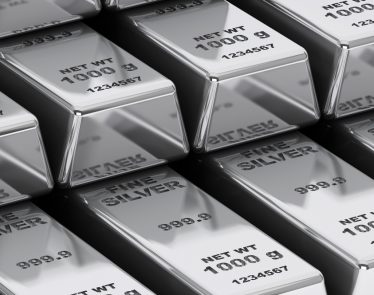Silver is a precious metal that is highly conductive. On the periodic table, it is categorized as a transition metal, with atomic number 47 and the symbol Ag. Besides currency, silver is used in a variety of things such as solar panels, water filtration, jewelry, photography, electronics, medicine, and more. As well, silver is used in traditional ceremonies and worn as jewelry in many global cultures and religions.
While gold is often viewed as the commodity to watch when it comes to price movements in the global marketplace, silver is also viewed by many as a necessity when it comes to understanding potential price movements in the commodities markets, and even the overall marketplace. This is because a wide range of buyers and sellers trade silver based on global-macro trends.
Silver as an investment is seen as a positive as it will always hold some sort of monetary value, like gold. This means that if fiat currency falls, silver will not fall with it. As investors begin to start losing faith in flat currencies, silver investing 2017 seems to be peaking.
Investors and traders buy and sell silver through commodities markets. Common commodities markets that trade precious metals are found in Japan, London, mainland Europe, and the United States. Silver investing comes in a variety of forms: stocks, futures contracts, ETFs, and physical silver bars and/or coins.
A Brief History of Silver
The discovery of silver has largely been lost to history, but evidence of the very first silver mines dates all the way back to 3000 B.C. at a site that is now in modern-day Turkey. It is hypothesized that during this time, silver production was also happening in India, China, and Japan; though this was not well documented.
In 1200 B.C., silver mining in Europe shifted to Greece as the ancient Greek civilization expanded. Then, as Rome began to take over at around 100 A.D, Spanish silver mines fed their economy.
As technology and production techniques and more mines were discovered, the popularity of silver increased during from the years 1000 to 1500. The quest for more precious metals, including silver, paved the way for many European countries (England, France, Spain, to name a few) to launch exploring fleets to sail the world.
By the end of the 19th century, more than 120 million Troy ounces of silver is produced annually.
Silver Coins
One of the most popular application of silver throughout history is its usage as minted coins. However, because of the dwindle in supply in the early 1960s, the United States government stopped using silver in its coins. If you have any American dimes, quarters, half dollars or dollar coins that is dated 1964 or earlier, you are in luck, as these coins are 90% silver.
If the price of silver is $20 per ounce, the silver coins dated 1964 or earlier are worth about 14 times their face value. Thus, at a $20-per-ounce price, a silver dime would be worth $1.40, while a silver dollar is worth $14. Don’t be too quick to trade in for that money, however, as keeping it would be good for silver investing. This is true especially since silver prices have been projected to rise.
Silver Prices and Statistics
The highest per-ounce price of silver occurred in the early 1980s, where the metal was valued at more than $20 per Troy ounce. Eventually the price dwindled down in the 1990s, but have recently climbed back up in 2014 when it rose to around $19 per Troy ounce. Silver as an investment is beginning to gain more appeal now, as prices are expected to rise again due to a decline in flat currency.
In terms of mining, more than 27,300 tonnes of silver was produced in 2015. The silver mostly came as a byproduct from zinc, copper, and gold mines. China, Mexico, and Peru produced the most silver in 2015.
Featured Image: depositphotos/doomu











